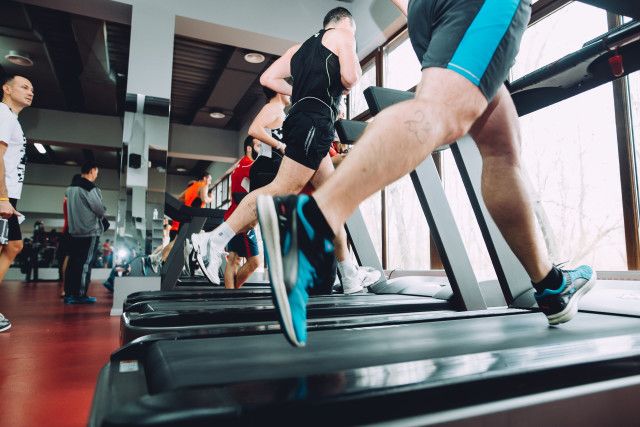
Can Runners Stay Injury-Free?
Statistically, there is evidence that indicates up to 60% or more of recreational runners are running with injuries. With so many injured runners out there, does this mean that running is bad for us and we shouldn’t do it, and is it possible to prevent injuries with running? These kinds of questions are asked by many runners and non-runners every day at TPM. In short, running is not bad for us, there are many benefits to running that far outweigh the risk of developing a running-related injury.
With recreational running increasing in popularity year after year, this has prompted large amounts of research on recreational running and injury prevention. At this stage, there is no magic recipe to eliminate injury risk with running, however, there is now growing evidence on some factors that increase the risk of developing a running-related injury.
Firstly, it’s necessary to define what we mean by running-related injury; for simplicity we will call a running related injury and injury that occurs to the lower limb due to running that lasts for more than three consecutive runs and/or interferes with the ability to complete a run. The strongest evidence around risk factors for developing a running related injury are as follows:
- Previous history of a musculoskeletal injury in the last 12 months (either running or non-running related)
- Body Mass Index (BMI) greater than 26kg/m2 (calculate by dividing your weight (kg) by your height (m) squared)
- Less than five years of running experience
- Not performing interval training on a regular basis as part of training
Other factors that are also worth noting that reduce the risk of running related injuries include having a higher training volume (i.e. the more kilometres run the lower the risk); the use of the contraceptive pill for women also reduces risk (conversely an irregular or absent menstrual cycle increases the risk of running related injuries).
Running and Injury
For the novice runner there are some specific risk factors to be aware of including increasing age, higher BMI and any previous musculoskeletal complaints not related to physical activity. Being new to running is a risk factor all by itself, that is, having no previous running experience is a risk factor for developing an injury.
There are many other risk factors that are specific to individuals including running technique and biomechanics (heel strike versus midfoot/forefoot strike, overstriding, under-pronation and over-pronation of the foot, knee alignment (knock knees versus bow legs), pelvic stability and control, asymmetry between the left and right side of the body), types of surfaces being run on (road, cement, grass, trails, treadmill), footwear and training periodisation, however the current evidence surrounding each of these areas are not as strong as those mentioned earlier.
Given all the known risk factors for developing a running related injury, it becomes clear that there are some factors that are within our control and some that are not. Having a previous history of an injury in the last 12 months and having less than five years of running experience is not something that we can control, however it can help to inform us about how to modify a running training program to account for those factors. So while it is not possible to completely avoid running related injuries, it is possible to reduce the risk. Here are some tips on how to reduce your risk of developing a running related injury:
- Reduce your body weight. Less body weight equals less forces and stress being placed on the lower limbs with every step. Reducing body weight can be achieved through non-running activities that may place less repetitive stress on the body (swimming, bike riding, gym-based activities, walking) and addressing poor nutrition.
- Be consistent with running. Running once or twice a week will increase your risk of developing an injury. Aim to run three times a week and allow at least 24 hours of no running between runs. For example, run on Monday, Wednesday and Saturday but do not run on consecutive days.
- If you have had an injury in the previous 12 months, consider seeing a health professional who specialises in running injury management prior to starting your running program. Understand what your individual risk factors are and address these upfront before increasing your running.
- Follow a structured program that is designed for you. Consider getting a coach who will modify your training program based on how you are progressing. Gradually building your training volume with regular recovery periods is essential to reduce the risk of getting injured.
- Join a Strength training Class. This is a vital piece of the puzzle. Strength training is often the element to take runners to the next level, it accomplishes three goals for runners: it prevents injuries by strengthening muscles and connective tissues; it helps you run faster by boosting neuromuscular coordination and power, and it improves your running economy by encouraging coordination and stride efficiency. TPM Runners strength class is every Tuesday night at 5:30pm, bookings are essential.
The most important thing about any type of exercise is that it’s enjoyable. So make sure you find ways to enjoy your runs by adding variety to the types of runs you do, who you are running with and where you are running. And if you do get injured, its not the end of your running career. Seeking professional advice early will reduce the amount of time you’re away from running and have you back out there enjoying what you love sooner.
TPM has running-specific health professionals on the Coffs Coast, Woolgoolga and Yamba. Biomechanical assessments and Physiotherapy appointments are available.
Visit www.tpmwoopi.com.au or call (02) 6654 0237


